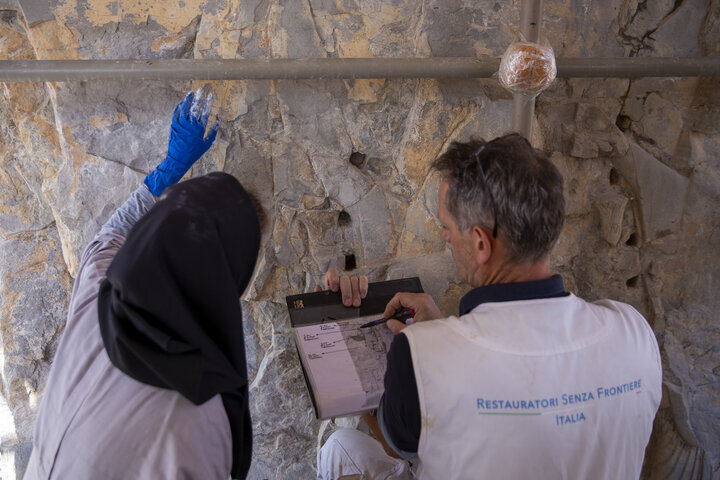Emerging technologies to evolve restorations in Iran, expert says

TEHRAN – In recent years, Iran has sought to improve methods of restoring historical sites by using new technologies, an official with the Research Institute for Cultural Heritage and Tourism has said.
Iran, however, lags behind other nations when it comes to using modern restoration methods, whereas these methods are used all around the world for restoring ancient monuments, ILNA quoted Shiba Khadir as saying on Saturday.
In recent years, Iranian restorers use lasers as one of the new methods for cleaning ancient stones and metal artifacts, a method used worldwide for several years, she noted.
In the case of artifacts that are fragile and cannot be repaired mechanically, or where chemical cleaning methods can be harmful, lasers are particularly effective, she added.
However, the use of lasers requires study and expertise, and restorers who work with this method must be knowledgeable about both the structure and materials of the ancient object, as well as the science of using lasers and their wavelengths, she mentioned.
As part of a restoration project, Iranian experts working alongside a group of foreign restorers in Persepolis use lasers to get to the underneath layers of rocks of the World Heritage site in order to identify those layers, Khadir added.
“This method was effective for removing surface layers and achieving the main color of the ancient stones without harming the ancient objects.”
Due to the high price, these devices are mostly used by scientific and research centers, and government support is necessary to use them in restoration centers, she said.
Restorers have also been using the plasma method for some time now as a method of restoring historical objects, she explained.
Last September, a team of Iranian researchers and archaeologists applied a laser beam in their pilot project to clean ancient iron artifacts.
The team, affiliated with the Research Institute for Cultural Heritage and Tourism, described this clean-up as one of the most challenging measures in the restoration of historical objects, Mehr reported.
“In this field, several methods are used by cleaners in a principled and scientific way, each having its advantages, disadvantages, and limitations.”
Arrays of iron objects, excavated from the Arzan-Fud site of the archaeologically rich Hamedan province, were subject to the cleaning project, the report said.
Experts say this technology is used for imaging and documenting, detection, and cleaning in the protection and restoration of historical monuments.
“Utilization of this technology along with other common cleaning methods plays an important role in completing and improving metal protection operations, and this method can be used in treatment to prevent further crushing due to not imposing external mechanical pressure on very brittle and modified objects.”
Laser cleaning is an eco-friendly process used to remove rust, paint, oxide, and other contaminants from metal surfaces. Because of its efficiency, it is being used in an increasing number of applications.
The UNESCO-registered Persepolis, also known as Takht-e Jamshid, whose magnificent ruins rest at the foot of Kuh-e Rahmat (Mountain of Mercy), was the ceremonial capital of the Achaemenid Empire. It is situated 60 kilometers northeast of the city of Shiraz in Fars province.
The royal city of Persepolis, which ranks among the archaeological sites which have no equivalent, considering its unique architecture, urban planning, construction technology, and art, was burnt by Alexander the Great in 330 BC apparently as revenge against the Persians because it seems the Persian King Xerxes had burnt the Greek City of Athens around 150 years earlier.
The city’s immense terrace was begun about 518 BC by Darius the Great, the Achaemenid Empire’s king. On this terrace, successive kings erected a series of architecturally stunning palatial buildings, among them the massive Apadana palace and the Throne Hall (“Hundred-Column Hall”).
This 13-ha ensemble of majestic approaches, monumental stairways, throne rooms (Apadana), reception rooms, and dependencies is classified among the world’s greatest archaeological sites.
ABU/AFM
Leave a Comment